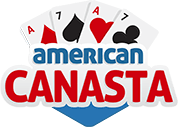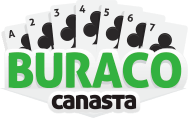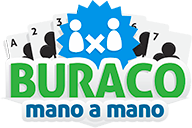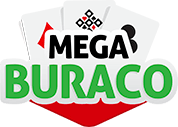Description
It's a 4 player game (2 teams), with a 108 card pack containing two 52 card standard packs plus 4 jokers. Eleven cards are dealt to each player. The team that scores more points wins the game. Melds - a meld is a set of matching cards placed face-up on the table. In classic canasta to make a meld you must combine cards of the same rank. The smallest meld consists of three cards. Every meld must contain at least two natural cards and not more than three wild cards. It's not allowed to meld 3s with other cards. It's not allowed to have two melds of the same rank, in that case you must merge them.
Melding 3s: If a player is dealt a red 3, it must be placed on the table. After the red three was laid on the table it must be replaced by another card from the stock pile. This meld doesn't count as a initial meld. It's not allowed to meld black threes.
Wild cards: 2s and Jokers can be combined with a meld of any rank, following the rules.
Going out: when you are able to meld all your cards before the other team does. At least one canasta is required for going out.
Canasta: A meld of seven or more cards counts as a canasta. A canasta must contain at least five natural cards. There are two types of canasta, Mixed canasta (containing wild cards) and Natural canasta (using only natural cards).
Initial meld: to make a initial meld the player must meld the cards in order to reach at least the minimum count. The minimum count depends on your team's cumulative score at the start of that hand.
Frozen discard pile: The discard pile is frozen against one team if that team hasn't made its first meld or for both teams if a wild card or a black three is discarded.
Playing Classic Canasta
At your turn, draw a card from the stock (face-down pile of cards) or discard pile(face-up pile of cards), check if there are any cards you can meld and select a card you want to discard (the game moves clockwise). By discarding you end your turn and allows the next player to play. In order to go out at least one canastas is required. If any of the teams menage to go out, the game ends if the stock pile is empty and a player needs to draw from it.
Drawing from the discard pile
instead of drawing from the stock pile, the player may draw all the cards of the discard pile. To do so the player must add the top card of the discard pile to a already existing meld or meld it with at least two natural cards of his hand.
Initial Meld requirement in Classic Canasta:
| Cumulative Score | Minimum count of initial meld |
| Negative | 15 points |
| 0 - 1495 | 50 points |
| 1500 - 2995 | 90 points |
| 3000 or more | 120 points |
The standard values of the cards you play are added to check whether the requirement has been met.
Going out concealed
For going out with a concealed hand the player must menage to meld all the cards in his hand at once, with at least one canasta. To do so, the player can't have any previous melds laid (red threes are exception), however he can ignore the initial meld minimum count required. It's allowed to go out with a concealed hand after drawing the discard pile, but in that case the player can't ignore the initial meld minimum count required.
Scoring
When game ends, each team reckons its total score for the hand. The team's score is obtained by adding up the bonuses and penalties and subtracting the point values of the cards left in the hand of the other partner. If a team has at least one canasta, the point values of all the cards in the melds placed on the table are counted and added up to the total score. The cards value points are:
- Joker: 50 points each
- A, 2: 20 points each
- K, Q, J, 10, 9, 8: 10 points each
- 7, 6, 5, 4: 5 points each
The bonus scores are counted as follows:
- Going out +100 points
- Going out concealed: an extra 100 points, making +200 for going out
- Natural Canasta: +500 points each
- Mixed Canasta: +300 points each
- Red threes: +100 points each (add an extra 400 points if all four red threes are laid)
The red threes scoring will be positive if the team has at least one meld, otherwise, it will be subtracted from the team's score.
The game ends when one of the teams reaches a cumulative score of at least 5000. The team with more points wins the game.
Learn how to play other USA Games
Amplify your knowledge at Card Games reading the rules and watching videos from similar games to Classic Canasta .









